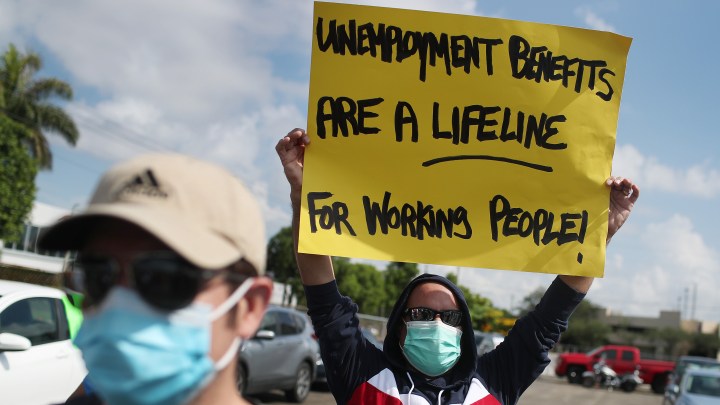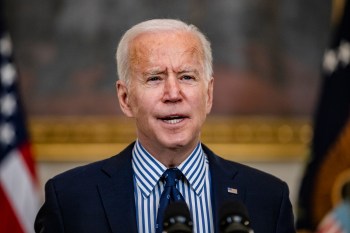
In the third week of March — as COVID-19 spread across the country and schools and businesses were shut down — 3.3 million laid-off American workers applied for jobless benefits. That was five times more than during the worst week of the Great Recession.
In the following week, the number of new claims doubled. By mid-May, more than 30 million Americans — roughly 1 in 5 of those who had been employed before the pandemic — were on the unemployment rolls. They qualified under either their regular state unemployment insurance program or through the CARES Act’s Pandemic Unemployment Assistance program.
PUA provides federally funded jobless benefits to those not eligible under state rules: for instance, gig workers, the self-employed, part-time and temporary workers, and those unable to work because of COVID-19.
The unprecedented deluge of claims completely overwhelmed the system — which is a patchwork of programs run by the states with support from the U.S. Department of Labor. The task by states was further complicated by having to apply new federal rules for eligibility under PUA, and also having to add an extra $600 to every recipient’s weekly benefit under the Pandemic Unemployment Compensation program.
Laid-off workers waited for hours on hold without ever reaching a state unemployment office worker; online application portals repeatedly crashed; and people’s applications sat in the system for weeks or months without a ruling or any benefit being paid.
“In some states we’re seeing 70% [of applications] approved, in some states, 40 to 50% approved,” said Michele Evermore, a policy analyst at the progressive group National Employment Law Project. “A lot of those are inaccurate denials, a lot of those are people who are still in limbo.”
There is broad agreement across the political spectrum that the antiquated computer systems that the states run independently from one another failed catastrophically to respond to the economic emergency caused by the pandemic.
“It’s clear that we need to upgrade the IT systems,” said labor economist Michael Strain at the conservative think tank American Enterprise Institute. “It’s causing problems in getting benefits to the people who need them. ”
Strain said the sclerotic system has also limited economic policy options in the pandemic. For instance, in the CARES Act, many in Congress wanted to add extra federal money to people’s unemployment checks, so laid-off workers wouldn’t need to look for new jobs during the pandemic. But lawmakers didn’t want people to earn more on unemployment than they had made while working.
“It should not be beyond the technological capability of state governments to calculate what a person’s previous wage was, and then to give them 100% of that amount in an unemployment benefit,” said Strain. But it was beyond those systems capabilities. So Congress just gave everyone an extra $600 a week.
IT consultant Adam Bobrow, who co-authored a reform proposal for the Day One Project to offer the Biden administration, said state unemployment systems should be connected to federal agencies that already have key information about American workers, to verify eligibility and other details on applications.
“Wage data, dates of employment and things that are available in federal databases about employees,” Bobrow said, “so you could demonstrate eligibility on a bit more of an automated basis, in a way that scales.” He said a good model for how this could work is the U.S. Digital Service, which already provides support for determining eligibility for Obamacare subsidies and veterans benefits.
Other reform proposals address the wide disparity between states in benefits and eligibility. Michele Evermore at the National Employment Law Project thinks the federal government should set baseline standards to equalize and make benefits more generous: “26 weeks of benefits, a minimum wage replacement amount, a better weekly benefit, a simplified application process.”
Conservatives like Michael Strain counter that states should continue to have wide latitude to respond to local economic conditions. “I think it makes sense for states to say, ‘We think in our state, a less generous benefit makes sense.’ And maybe in another state a more generous benefit makes sense. And if voters in those states want different systems that seems like a reasonable outcome,” he said.
The Biden administration will likely be able to push IT upgrades and enhance data coordination between state and federal systems. And it might be able to issue new administrative guidelines to speed up claims processing and reduce denials.
But setting new national standards to increase unemployment benefits and expand eligibility will be mostly up to Congress through legislation.
There’s a lot happening in the world. Through it all, Marketplace is here for you.
You rely on Marketplace to break down the world’s events and tell you how it affects you in a fact-based, approachable way. We rely on your financial support to keep making that possible.
Your donation today powers the independent journalism that you rely on. For just $5/month, you can help sustain Marketplace so we can keep reporting on the things that matter to you.


















